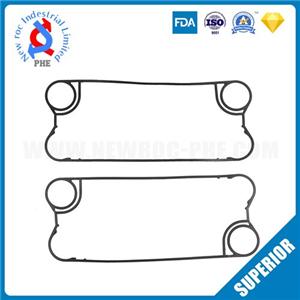Plate Heat Exchanger As Vaporizer and Condenser-3
Plate heat exchangers (PHEs) have been installed in larger heat pump systems and refrigeration systems since the 1980s. Tech-nicians who deal with these systems need to know some specific details of how they work.
Part one of this article covered PHE design, on-site assembly and service, leak indication, freezing risk, and resistance from vibration, pressure, and seismic occurrences. This week the article continues its discussions of the plate heat exchanger as vaporizer and condenser.
FREEZE RISK
The PHE can be designed close to the freezing limit. It is worthwhile repeating the significance of this:
· Smaller amount of cooled medium to be circulated;
· Lower brine or glycol concentration; and
· Low sensitivity demanded by capacity regulation.
The PHE does not completely freeze, and the medium continues to circulate. This means:
· Fast thawing with circulating liquid and the compressor shutdown; and
· No need to defrost with hot gas.
The brazed PHE is a somewhat more rigid construction than the twin-plate PHE, having less internal flexibility. It is therefore somewhat more sensitive to damage due to repeated freezing than is the twin-plate, and is designed with a somewhat higher minimum surface.
Freeze indication is most readily and quickly obtained via a determination of the pressure drop on the liquid side. An increase in pressure drop occurs instantaneously with the onset of freezing. In systems with varying flow rate, however, this method is evidently less suitable. A low-pressure “pressostat” with a fair margin and/or regulation via minimum liquid temperature from the vaporizer is required.
Freezing tendency can be minimized through a calculated minimum wall temperature, which lies somewhat above the freezing point. Submerged vaporization permits higher vaporization temperature than does total vaporization-superheating.
Pure co- or counter-current operation affects the minimum wall temperature. The freezing point will be influenced by the composition of the water. The presence of solid particles increases freezing tendency compared with that for pure water; chemical impurities often reduce the freezing point.
INDIRECT SYSTEMS
With the PHE as brine cooler and condenser, the CFC/HCFH system volumes can be kept at an absolute minimum. The brazed units, particularly, permit installation entirely within the framework of the machine, meaning that refrigerant need not exist outside the chilling unit.
In order to reduce the pumping cost for the viscous brine, the flow in the PHE can be kept low while maintaining turbulent flow. Stable control is thus achieved without discontinuities, which would result from the instabilities, which are the inevitable result of transition to laminar flow regimes.
The possibility of small temperature differences enable a reduction in vaporization temperatures, compared to DX systems, to be reasonably made. A return to submerged vaporization becomes once more of interest.
Indirect systems can thus involve advantages not only from the low refrigerant volume, but also from the possibility of stable regulation and relatively high vaporization temperature. This can also be employed to use lower brine concentrations, which in turn has a positive effect on heat transfer rates and pumping cost.




